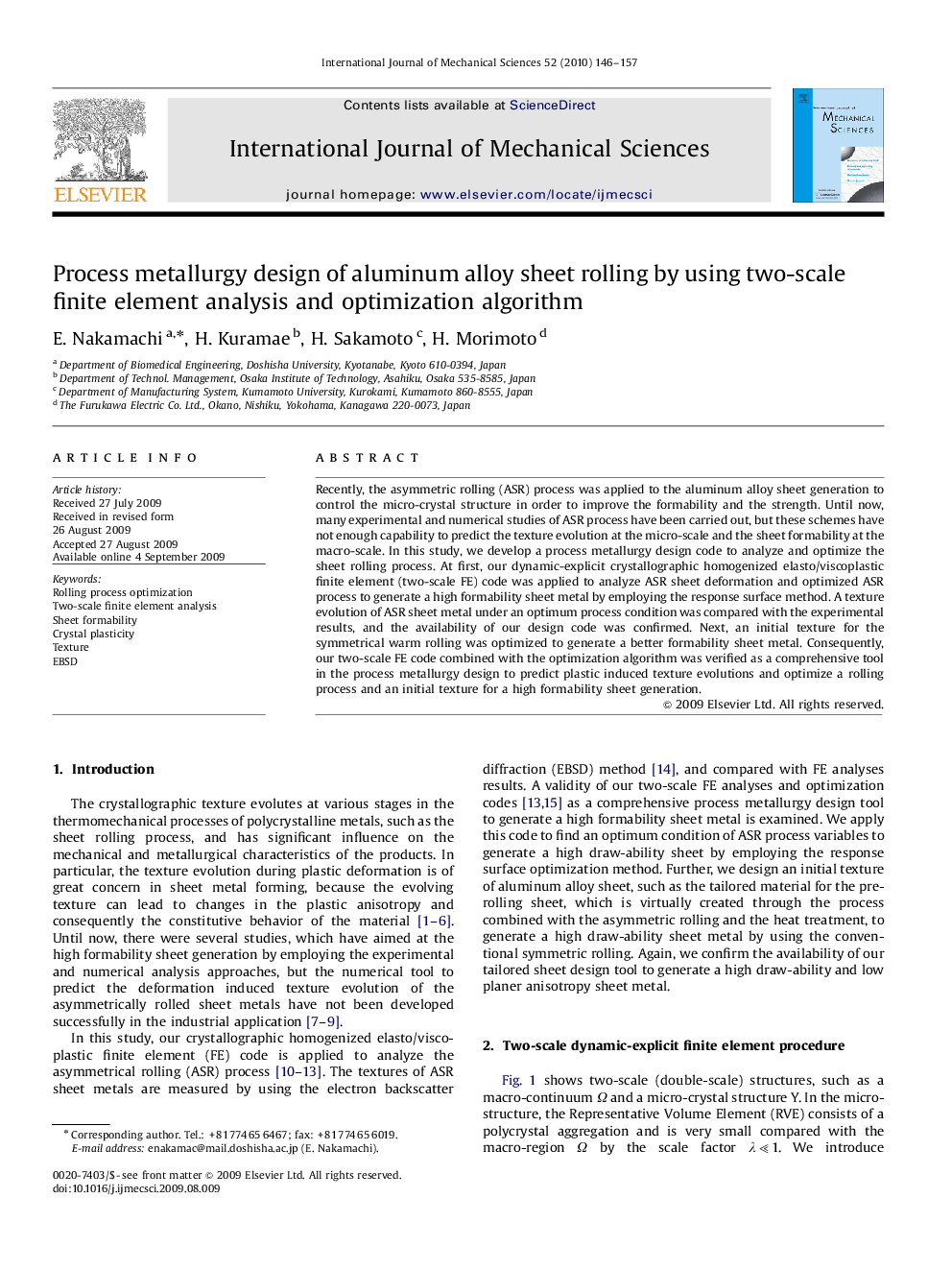| Article ID | Journal | Published Year | Pages | File Type |
|---|---|---|---|---|
| 783987 | International Journal of Mechanical Sciences | 2010 | 12 Pages |
Recently, the asymmetric rolling (ASR) process was applied to the aluminum alloy sheet generation to control the micro-crystal structure in order to improve the formability and the strength. Until now, many experimental and numerical studies of ASR process have been carried out, but these schemes have not enough capability to predict the texture evolution at the micro-scale and the sheet formability at the macro-scale. In this study, we develop a process metallurgy design code to analyze and optimize the sheet rolling process. At first, our dynamic-explicit crystallographic homogenized elasto/viscoplastic finite element (two-scale FE) code was applied to analyze ASR sheet deformation and optimized ASR process to generate a high formability sheet metal by employing the response surface method. A texture evolution of ASR sheet metal under an optimum process condition was compared with the experimental results, and the availability of our design code was confirmed. Next, an initial texture for the symmetrical warm rolling was optimized to generate a better formability sheet metal. Consequently, our two-scale FE code combined with the optimization algorithm was verified as a comprehensive tool in the process metallurgy design to predict plastic induced texture evolutions and optimize a rolling process and an initial texture for a high formability sheet generation.
